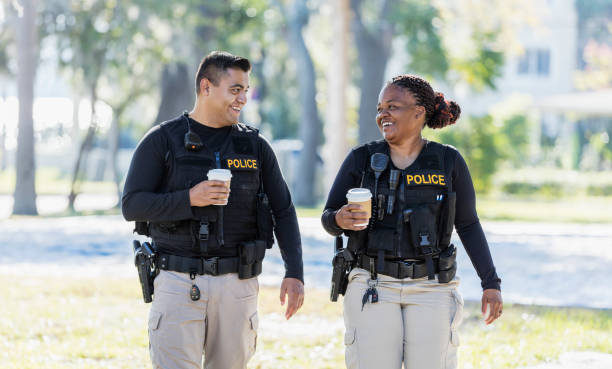Introduction
Conducting community surveys is a valuable method for gathering insights and feedback that can enhance policing efforts. By following best practices for designing and implementing surveys, law enforcement agencies can collect meaningful data that informs decision-making and improves community engagement. This blog post provides a comprehensive guide on best practices for conducting community surveys and highlights how Officer Survey can support these efforts.
Best Practices for Designing Community Surveys
- Define Clear Objectives
Before creating a survey, define clear objectives for what you want to achieve. Objectives might include assessing community satisfaction, identifying safety concerns, or evaluating the effectiveness of specific programs. Clear objectives help guide survey design and ensure that questions are relevant and targeted. - Develop Relevant Questions
Create questions that are directly related to the survey objectives. Use clear and concise language to ensure that respondents understand what is being asked. Avoid leading or biased questions that could skew results. - Ensure Survey Accessibility
Make sure the survey is accessible to all community members. Consider offering multiple formats, such as online surveys, paper surveys, and telephone surveys, to accommodate different preferences and needs. - Pilot Test the Survey
Conduct a pilot test of the survey with a small group of respondents before full deployment. This test helps identify any issues with question clarity, survey length, or technical problems, allowing you to make adjustments before the survey is distributed to the broader community. - Ensure Anonymity and Confidentiality
Assure respondents that their answers will be anonymous and confidential. This assurance encourages honest and open feedback, which is essential for obtaining accurate and useful information.
Best Practices for Implementing Community Surveys
- Promote the Survey
Use various channels to promote the survey and encourage participation. This might include social media, community events, newsletters, and local media. Clear communication about the survey’s purpose and the importance of participation helps increase response rates. - Provide Incentives
Consider offering incentives to encourage survey participation. Incentives can range from small rewards or prizes to public recognition. Incentives can boost engagement and ensure a higher response rate. - Monitor and Analyze Responses
Regularly monitor survey responses to ensure that the data collection process is running smoothly. Analyze the data promptly to identify trends, key issues, and areas for improvement. - Act on Survey Findings
Use the survey findings to inform decision-making and implement improvements. Address any concerns or issues raised by respondents and communicate the actions taken in response to the survey results. - Provide Feedback to the Community
Share the results of the survey and the actions taken based on the feedback with the community. Transparency about how the feedback is being used builds trust and demonstrates the department’s commitment to addressing community concerns.
How Officer Survey Supports Effective Community Surveys
Officer Survey offers tools and features that enhance the process of conducting community surveys. Here’s how the platform supports best practices for survey implementation:
- Customizable Survey Design
Officer Survey’s customizable survey tools allow departments to design surveys tailored to their specific objectives. This customization ensures that surveys gather relevant and actionable feedback. - Efficient Survey Distribution
The platform’s efficient distribution features streamline the process of deploying surveys to the community. Departments can quickly and easily reach a wide audience, increasing response rates and engagement. - Real-Time Data Collection
Officer Survey provides real-time data collection capabilities, allowing departments to monitor responses and analyze data as it comes in. This real-time feedback helps departments make timely decisions and adjustments. - Advanced Analytics
Officer Survey’s advanced analytics offer in-depth insights into survey results. Departments can identify trends, measure the effectiveness of policing efforts, and make data-driven decisions to enhance their services. - Secure and Confidential
Officer Survey ensures the confidentiality and security of survey responses, encouraging honest feedback from the community. The platform’s secure features maintain respondent trust and data integrity.
Benefits of Effective Community Surveys
- Informed Decision-Making
Effective surveys provide valuable information for making informed decisions about policing practices and policies. Data-driven insights help departments address community needs and improve service delivery. - Enhanced Community Engagement
Conducting surveys fosters greater engagement with the community. By actively seeking input and acting on feedback, departments demonstrate their commitment to collaboration and responsiveness. - Improved Policing Efforts
Survey findings can lead to improvements in policing efforts by identifying areas for enhancement and providing insights into community concerns. This continuous improvement process supports more effective and responsive policing. - Stronger Community Relations
Engaging with the community through surveys builds stronger relationships and fosters trust. A collaborative approach to addressing concerns and implementing changes enhances overall public safety and satisfaction.
Conclusion
Conducting community surveys is a powerful method for enhancing policing efforts and improving community engagement. By following best practices for survey design and implementation and leveraging platforms like Officer Survey, law enforcement agencies can gather valuable feedback, make informed decisions, and foster stronger relationships with the community. Effective surveys contribute to more responsive and effective policing, ultimately benefiting both officers and the public they serve.






